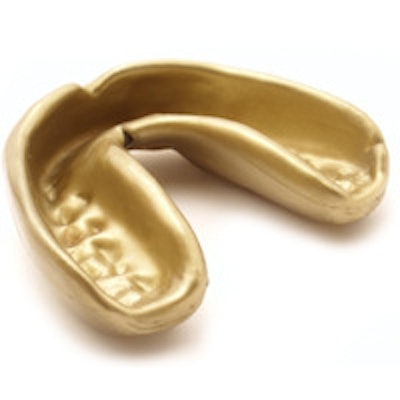|
One of the risks of playing sports is getting injured, and sometimes that means a tooth can become loose or even get knocked out. But the best time to prepare for a sports injury is before it even happens, according to sports dentist Ray Padilla, DDS.
Dr. Padilla is no stranger to sports-related dental injuries. He's the team dentist for the Los Angeles Galaxy Major League Soccer team and athletic teams at the University of California, Los Angeles (UCLA), as well as the consulting dentist for the U.S. National and Olympic soccer teams. He has years of experience treating and preventing injuries, and he believes that awareness about what to do in case of an injury should start before the injury occurs.
“The best time to help prevent sports injuries is before they happen,” he said.
Below are three ways you can help prevent sports trauma and save teeth if it does occur.
1. Reduce risk of an injury
More than 80% of injuries happen to the top four front teeth, according to Dr. Padilla. Unfortunately, some people’s teeth naturally form in a way that makes them more prone to sports injuries. If this is the case, a dentist may recommend you see an orthodontist or maxillofacial surgeon to correct the problem.
2. Get the right mouthguard
Getting and consistently wearing a custom, properly fitting mouthguard is one of the best ways to prevent sports injuries. Dr. Padilla recommends that children start wearing a mouthguard around 11 years old, when sports start to become more intense. However, he noted that he had his own children wear mouthguards at age 5, because he wanted them to get used to wearing them.
Also, not all mouthguards are created equal. Dr. Padilla cited research that the boil-and-bite mouthguards from stores don’t prevent injuries any more than not wearing a mouthguard at all. In his own dental practice, he only creates pressure thermoformed mouthguards, and he said that stock boil-and-bites and conventional vacuum mouthguards do not come close to the same level of protection.
“I have never had an injury with any athlete who’s worn a pressure thermoformed mouthguard,” he said. “And I’ve been fabricating these for more than 20 years.”
3. Know what to do if a tooth does come out
If a tooth does come out, you need to rinse off any debris and then put it back in the mouth within five minutes, according to Dr. Padilla. Then, for strictly dental injuries, call your dentist as soon as possible.
“By the time they see us ... it’s too late,” he said. “Parents, coaches, teachers, nurses … if this happens on your property, you need to put that tooth in right away, within five minutes.”
Dr. Padilla explained that if the tooth has been out for more than those crucial few minutes, it will never be the same again, and if a dentist does put it back in the mouth, it’ll have to be extracted eventually.
However, there are circumstances when a tooth cannot or should not be put back in, such as if the person is unconscious. In those instances, Dr. Padilla recommends you use a Save-A-Tooth emergency tooth preserving kit, or even just put the tooth in milk. Never store a tooth dry or even in water.
|

